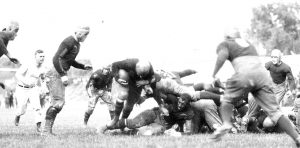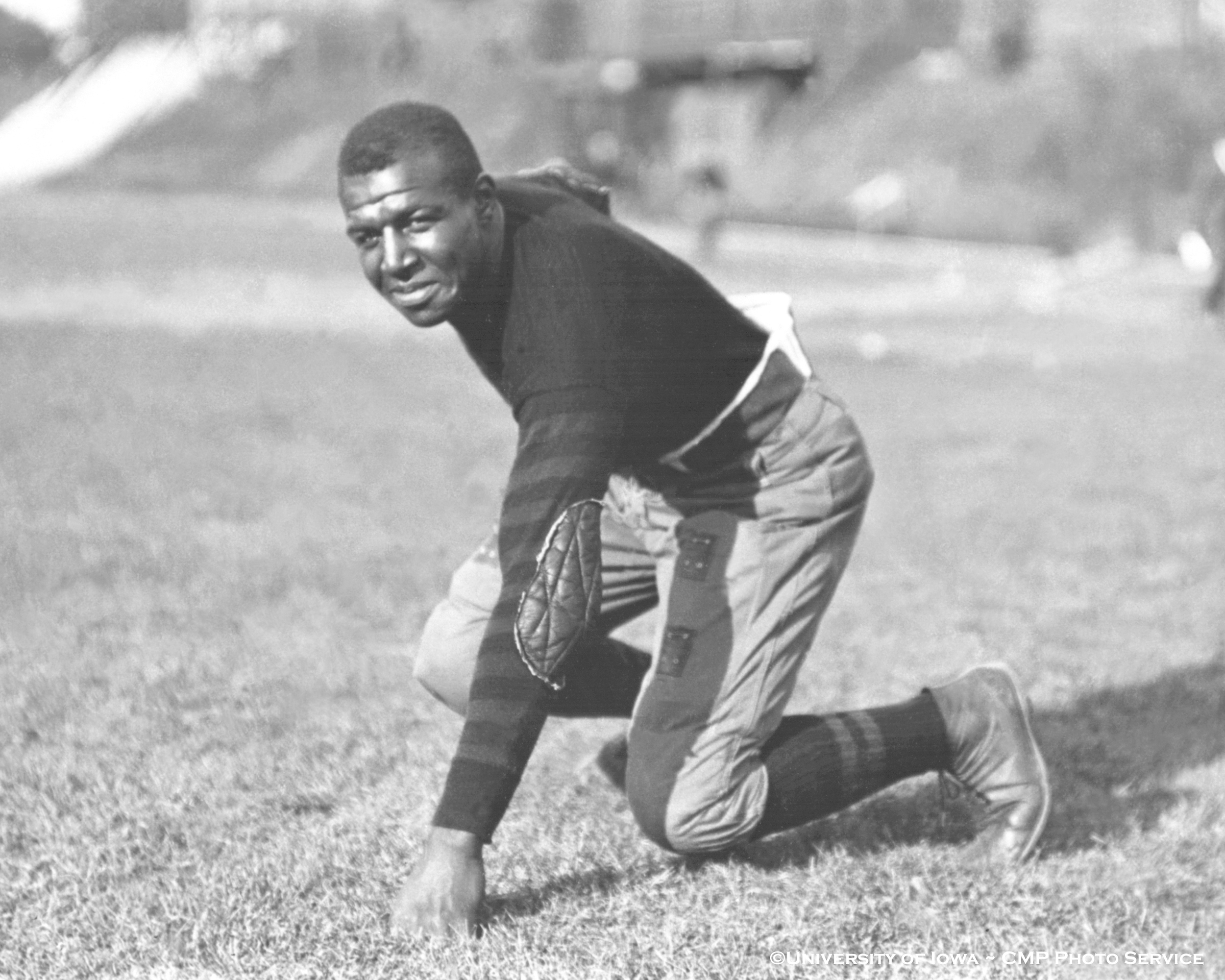Better late than never in naming Kinnick Stadium field after Duke Slater
By Pat Harty
IOWA CITY, Iowa – Something that should’ve happened a long time ago finally happened on Wednesday as the University of Iowa announced that the playing field at Kinnick Stadium will be named after Duke Slater.
This decision almost certainly would not have been made without the racial unrest from within the Iowa football program last summer, and looks more like a symbolic gesture.
Iowa’s image took a severe hit, and it’s been damage control ever since, along with trying to change a culture that was poisoned by unconscious bias.
It would be easy to criticize this move as being too little and too late, because at one point, Kinnick Stadium was going to be named after both Nile Kinnick and Duke Slater.
The idea of honoring Slater at Iowa’s stadium originated in the 1970s when university president Willard “Sandy” Boyd proposed naming the Hawkeyes’ stadium Kinnick-Slater, in part to honor 1939 Heisman Trophy trophy winner Nile Kinnick.
Boyd’s idea faced resistance from some fans and a committee opposed to having a joint name. As a compromise, the university named the stadium for Kinnick and a residence hall for Slater.
The decision to drop Slater’s name from stadium consideration didn’t look good from an optics standpoint, and the story resurfaced last summer in the wake of the racial unrest within the Iowa football program.
The timing of Wednesday’s announcement also looks suspicious due to what happened last summer when multiple former Iowa black players accused the football program of racial disparities.
It looks as if UI officials were pressured into naming the field after Slater, and that’s because it’s true.
This decision was about public relations as much as doing the right thing.
But something is better than nothing in this case.
A culture doesn’t change overnight, or in a year, but since the racial unrest from last summer, the Iowa football team’s Leadership Group is no longer dominated by white players, the environment within the program feels more like a home than a house, according to receiver Tyrone Tracy Jr., who is black, and now the field at Kinnick Stadium is named after one of the greatest black trailblazers in the history of college football.
That’s progress.
Iowa coach Kirk Ferentz as part of the fallout from last summer also now lets his players be active on Twitter.
So yes, the environment is changing.
But more changes are needed, and more time is needed to allow the changes to happen.

Slater was born in Normal, Ill., in 1898 and attended high school in Clinton. He then played for Iowa from 1918 to 1921 under head coach Howard Jones. Slater helped the 1921 Hawkeyes finish 7-0, including a 10-7 victory over Notre Dame and legendary coach Knute Rockne.
Slater played without a helmet at Iowa, and that only added to his legend and mystique. He was tough, courageous and determined.
Slater was the NFL’s first Black lineman, playing on offense and defense for 10 seasons with teams in Rock Island, Illinois, Milwaukee, and Chicago.
Slater, who died in 1966 at age 67, will be inducted next month into the Pro Football Hall of Fame. He entered the College Football Hall of Fame in 1951.
His life would make a great movie, and Iowa football is fortunate that Slater’s rich legacy is part of its tradition and landscape.
And while there still is much work to do in the fight for racial equality, especially considering Iowa State’s Jack Trice Stadium is the only stadium in the Power Five conferences to be named for a Black player, it’s only fair to point out when progress is made.
And for Iowa, naming the field at Kinnick Stadium after Duke Slater was a step forward regardless of how and when it happened.



